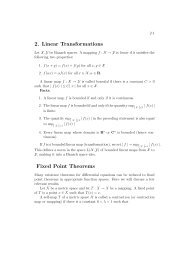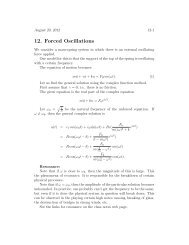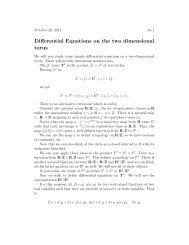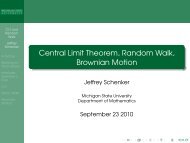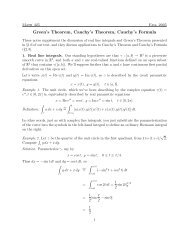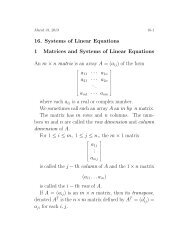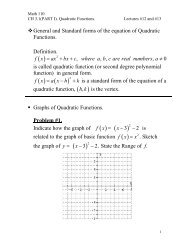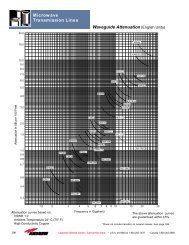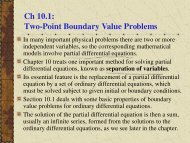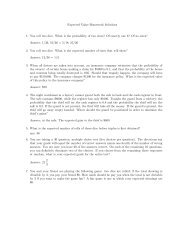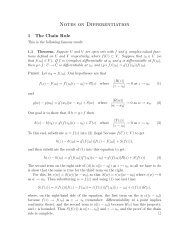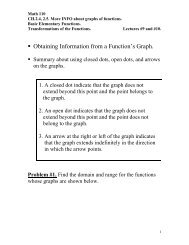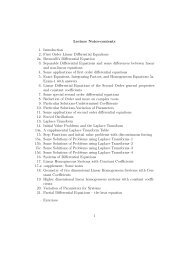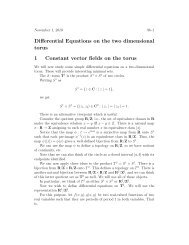16. Systems of Linear Equations 1 Matrices and Systems of Linear ...
16. Systems of Linear Equations 1 Matrices and Systems of Linear ...
16. Systems of Linear Equations 1 Matrices and Systems of Linear ...
Create successful ePaper yourself
Turn your PDF publications into a flip-book with our unique Google optimized e-Paper software.
March 31, 2013 16-27A(v) = A(αξ + βη)= αAξ + βAη= αr 1 ξ + βr 1 η= r 1 (αξ + βη)= r 1 vTherefore v is also an eigenvector as required.2. Let r 1 ≠ r 2 be distinct eigenvalues <strong>of</strong> A with associated eigenvectorsξ, η, respectively. Then, ξ is not a multiple <strong>of</strong> η.Pro<strong>of</strong>.Assume that ξ = αη for some α. Since both vectors are not 0, we musthave α ≠ 0.Now,Aξ = r 1 ξ= r 1 αη,Aξ = Aαη = αAη = αr 2 η,So,r 1 αη = r 2 αη.Since α ≠ 0, <strong>and</strong> η ≠ 0, we get r 1 = r 2 which is a contradiction.3. A real matrix may not have any real eigenvalues, but always has complexeigenvalues.In the language <strong>of</strong> subspaces, if we consider all <strong>of</strong> the eigenvectors for r 1<strong>and</strong> add the zero vector, then we get a subspace <strong>of</strong> R n . This is called theeigenspace <strong>of</strong> r 1 .



